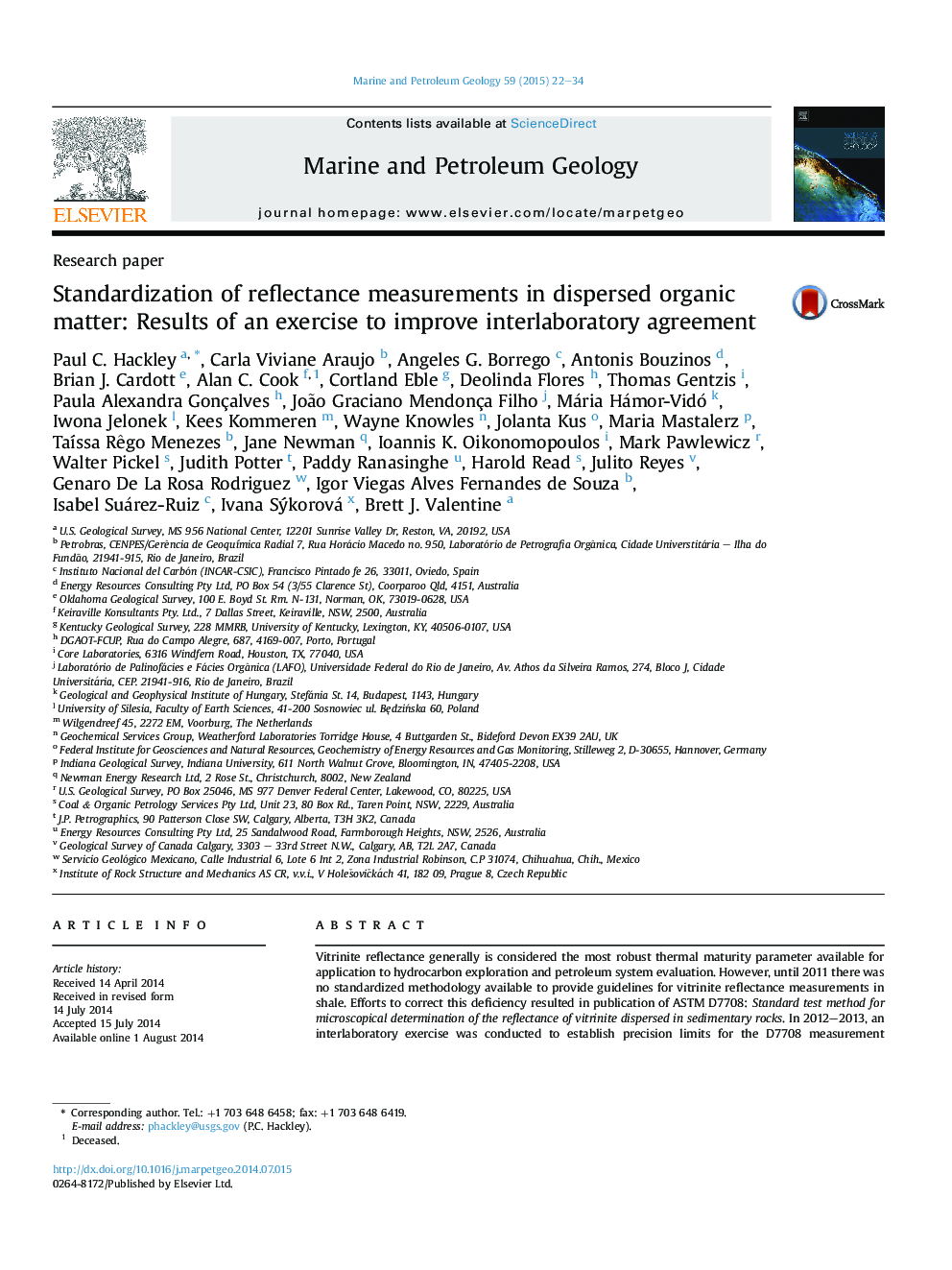| کد مقاله | کد نشریه | سال انتشار | مقاله انگلیسی | نسخه تمام متن |
|---|---|---|---|---|
| 4695605 | 1637166 | 2015 | 13 صفحه PDF | دانلود رایگان |
• ASTM method D7708 was tested by an interlaboratory study.
• Six shale samples were tested by 28 analysts in 22 laboratories from 14 countries.
• Repeatability limits (intralaboratory) ranged from 0.03 to 0.11% absolute reflectance.
• Reproducibility limits (interlaboratory) ranged from 0.12 to 0.54% absolute reflectance.
• Using D7708 improved reproducibility compared to historical interlaboratory studies.
Vitrinite reflectance generally is considered the most robust thermal maturity parameter available for application to hydrocarbon exploration and petroleum system evaluation. However, until 2011 there was no standardized methodology available to provide guidelines for vitrinite reflectance measurements in shale. Efforts to correct this deficiency resulted in publication of ASTM D7708: Standard test method for microscopical determination of the reflectance of vitrinite dispersed in sedimentary rocks. In 2012–2013, an interlaboratory exercise was conducted to establish precision limits for the D7708 measurement technique. Six samples, representing a wide variety of shale, were tested in duplicate by 28 analysts in 22 laboratories from 14 countries. Samples ranged from immature to overmature (0.31–1.53% Ro), from organic-lean to organic-rich (1–22 wt.% total organic carbon), and contained Type I (lacustrine), Type II (marine), and Type III (terrestrial) kerogens. Repeatability limits (maximum difference between valid repetitive results from same operator, same conditions) ranged from 0.03 to 0.11% absolute reflectance, whereas reproducibility limits (maximum difference between valid results obtained on same test material by different operators, different laboratories) ranged from 0.12 to 0.54% absolute reflectance. Repeatability and reproducibility limits degraded consistently with increasing maturity and decreasing organic content. However, samples with terrestrial kerogens (Type III) fell off this trend, showing improved levels of reproducibility due to higher vitrinite content and improved ease of identification. Operators did not consistently meet the reporting requirements of the test method, indicating that a common reporting template is required to improve data quality. The most difficult problem encountered was the petrographic distinction of solid bitumens and low-reflecting inert macerals from vitrinite when vitrinite occurred with reflectance ranges overlapping the other components. Discussion among participants suggested this problem could not be easily corrected via kerogen concentration or solvent extraction and is related to operator training and background. No statistical difference in mean reflectance was identified between participants reporting bitumen reflectance vs. vitrinite reflectance vs. a mixture of bitumen and vitrinite reflectance values, suggesting empirical conversion schemes should be treated with caution. Analysis of reproducibility limits obtained during this exercise in comparison to reproducibility limits from historical interlaboratory exercises suggests use of a common methodology (D7708) improves interlaboratory precision. Future work will investigate opportunities to improve reproducibility in high maturity, organic-lean shale varieties.
Journal: Marine and Petroleum Geology - Volume 59, January 2015, Pages 22–34
